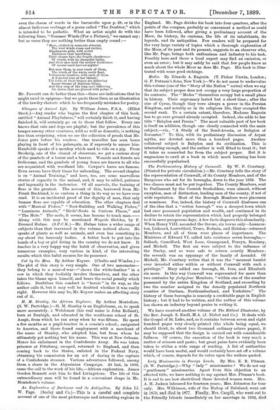The Parliamentary History of Cornwall. By W. P. Courtney. (Printed
for private circulation.)—Mr. Courtney tells the story of the representation of Cornwall, of its County Members, and of the Burgesses who sat for its boroughs, down to the year 1832. The two classes must not be put together. The County Members, sent to Parliament by the Cornish freeholders, were almost, without exception, men of distinction, leading men of the county, if not of wide reputation. Most of the Borough Members were placemen or nominees. For, indeed, the history of Cornwall disabuses one of the idea that a " rotten borough " was a decayed town which had once possessed population and wealth, and continued in its decline to retain the representation which had properly belonged to it in more prosperous days. A few facts disprove this abundantly. When Henry VIII. ascended the throne, six towns only—Launces- ton, Liskeard, Lostwithiel, Truro, Bodmin, and Helston—returned Members, and all of them were places of importance. The Ministers of Edward VI. called into existence seven boroughs,— Saltash, Camelford, West Looe, Grampound, Penryn, Bossiney, and Michell. The first six were subject to the influence of the Duchy, and so were safe to return courtly Members ; the seventh was an appanage of the family of Arundel. Of Michell, Mr. Courtney writes that it was the " meanest hamlet ever invested either within or without Cornwall with such a privilege." Mary added one borough, St. Ives, and Elizabeth six more. In this way Cornwall was represented for more than two centuries by forty-four Members, "within one of the number possessed by the entire Kingdom of Scotland, and exceeding by two the number assigned to the densely populated Northern counties of Durham, Northumberland, and Yorkshire." The history of these boroughs is scarcely a creditable page in English history ; but it had to be written, and the author of this volume has shown an industry beyond praise in writing it.






















































 Previous page
Previous page